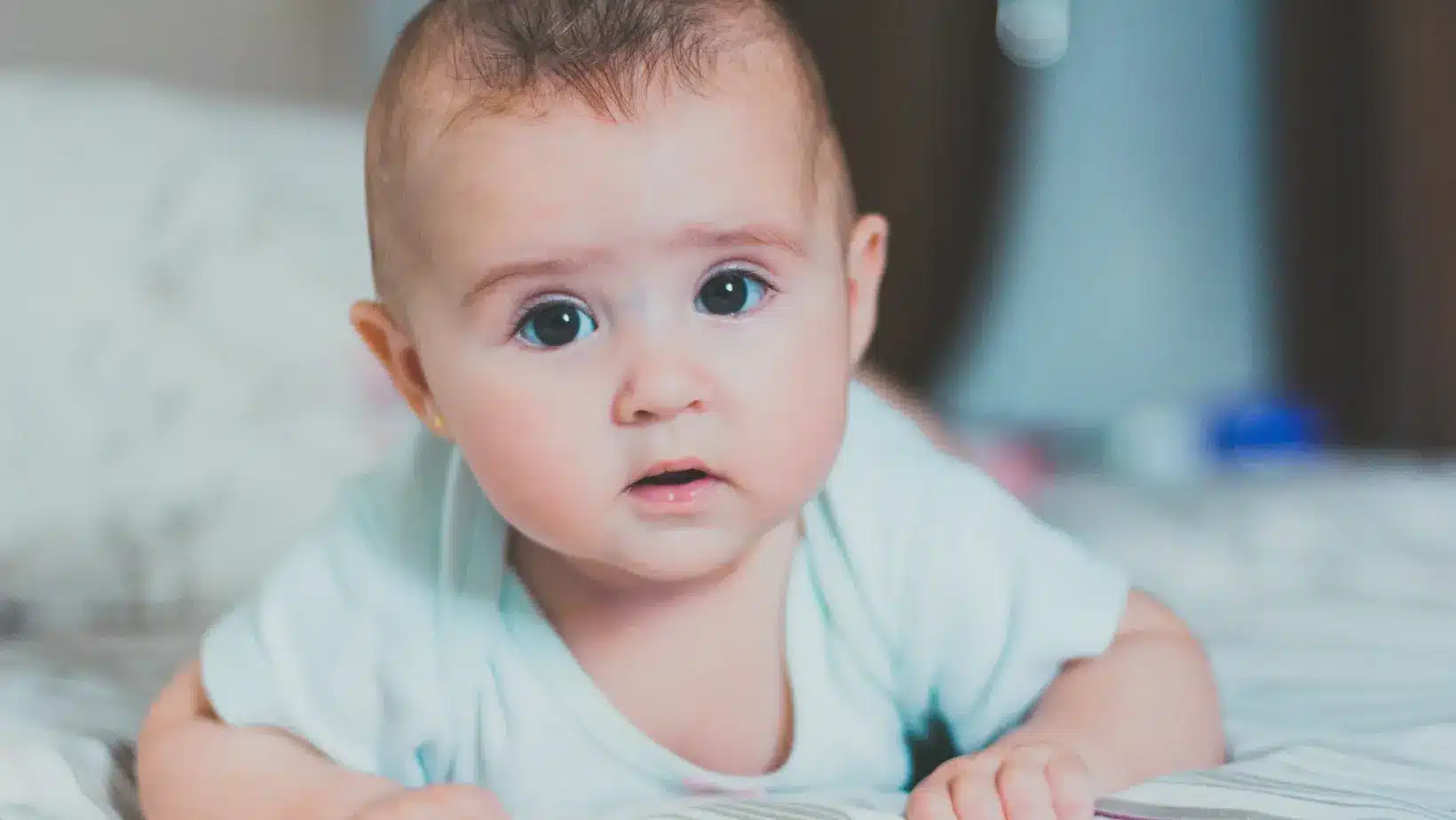When you give birth to your baby, and they are laying on your chest, they seem to recognise you. But can they really see you, even if their eyes are staring at you?
In this article:
- What does your baby see after childbirth?
- Black and white or in colour?
- Stimulating vision before four months
- Vision around four and a half months
- Vision development after seven months
Many researchers in Sweden, Great Britain and France have studied the question for many years. Data seems to indicate that a newborn starts by recognising their parents’ voice rather than their face. Even if the mother carried her baby, birth is the first face to face contact which allows everyone to get to know each other. Voices heard in the uterus allow the newborn to recognise tones that will likely calm them. Familiar voices will make them feel safe and get used to life outside the womb.
What does your baby see after childbirth?
When born, the baby’s vision will be blurry. They can distinguish the contours of faces at a distance of 18-20 cm, which is the usual distance between them and their parent’s face when held in their arms. Beyond 30 cm, images become even more blurry. So the baby concentrates more on their parents and their immediate setting. Which is perfect!
Imagine a baby arriving in our world who suddenly shifts from darkness to bright light! In the space of a couple of minutes, they would see everything that makes up their new environment. That would be scary! Think about it for a minute…
Black and white or in colour?
Up to about four months of age, everything is black, gray or white. The baby can’t see colours, as their eye functions are not mature enough. The cells that determine eye colour are not yet functional but will be so around four months of age, the moment when they will be able to see colours like an adult.
Around two months, they may be able to see colour – red, orange and yellow. In the meantime, their vision will improve as they grow and you will see their eye coordination improve as well. The baby will become less sensitive to light and will see more contours, colours and shapes at an increasingly greater distance. This progression is a great way to learn about a new setting.
Now you understand why newborns squint at the light, keep their eyes half-open and only open their eyes wide when it is darker. At the same time, they will be attracted to light (windows, lamps, ceiling fans) because they need 50 times more light than an adult to see.
At three months of age, you will also understand why they laugh when they see you and hear you laugh. They can now:
- See emotional facial expressions
- Better follow a moving object
- Stare at a thing or person
- Move their head and want to grab things around them, even if unsuccessful
Stimulating vision before four months:
- Talk to your baby at a distance of 20-25 cm from your face
- Games to make them follow an object with their eyes. Place their face close to your breast and slowly move them from left to the right, so the baby follows your face by moving their head. Pass a toy under their eyes to get them to track your movements.
- You can stimulate them by showing them images with bright contrasting colours (black/white) or hang a mobile with bright colours above their crib.
To continue reading, go to Vision Around Four and a Half Months


